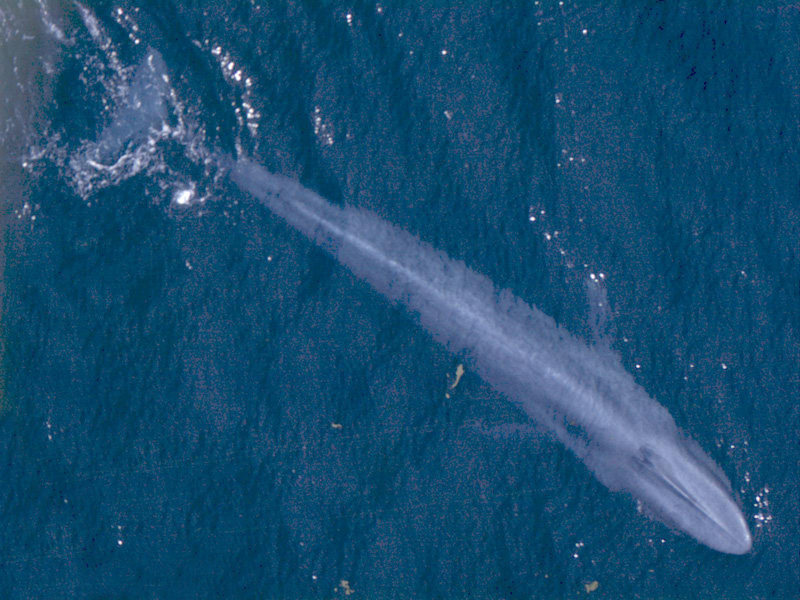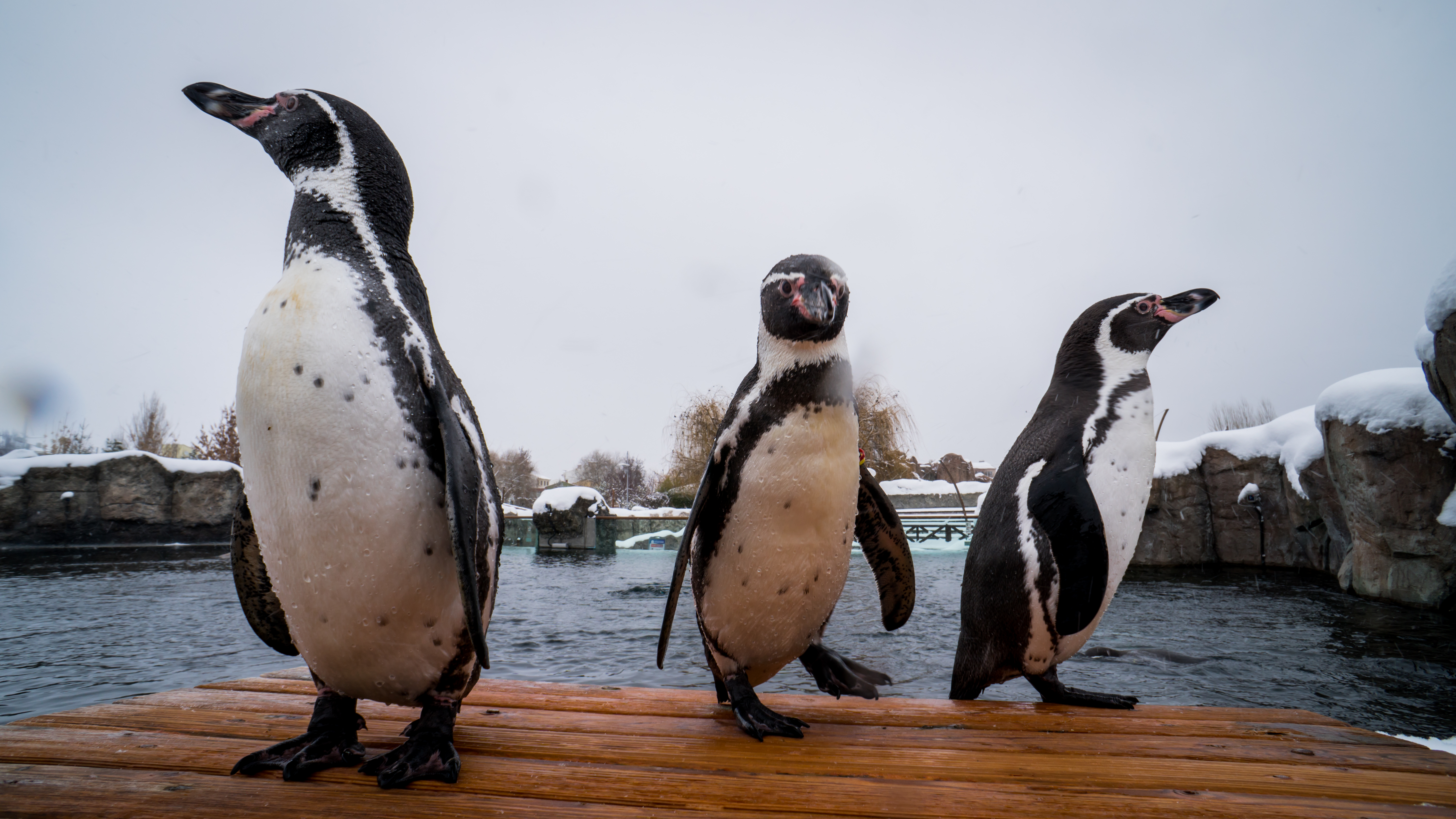|
Alfaguara Project
The Alfaguara project is a marine life conservation project operated from Puñihuil in the northwest of Chiloé Island, the main island in the Chiloé Archipelago in southern Chile. "Alfaguara" was the name given to blue whales by Chilean whalers. The focus of the project is on preservation of these endangered animals, the largest in the world. The project is operated by the Centro de Conservacion Cetacea (CCC), established in 2001. Its studies have made the Chiloé blue whale population one of the best understood in the southern hemisphere. Organization The Alfaguara Project was launched in 2004 and combines a long-term program of scientific research with local education and community building. It looks for ways to use whales in Chilean waters and preserve the marine ecosystem that do not involve killing the whales. It is recognized as a marine conservation initiative of national interest. In 2008 the government of Chile agreed with the Alfaguara Project's request to establish ... [...More Info...] [...Related Items...] OR: [Wikipedia] [Google] [Baidu] |
Marine Biology
Marine biology is the scientific study of the biology of marine life, organisms in the sea. Given that in biology many phyla, families and genera have some species that live in the sea and others that live on land, marine biology classifies species based on the environment rather than on taxonomy. A large proportion of all life on Earth lives in the ocean. The exact size of this ''large proportion'' is unknown, since many ocean species are still to be discovered. The ocean is a complex three-dimensional world covering approximately 71% of the Earth's surface. The habitats studied in marine biology include everything from the tiny layers of surface water in which organisms and abiotic items may be trapped in surface tension between the ocean and atmosphere, to the depths of the oceanic trenches, sometimes 10,000 meters or more beneath the surface of the ocean. Specific habitats include estuaries, coral reefs, kelp forests, seagrass meadows, the surrounds of seamounts ... [...More Info...] [...Related Items...] OR: [Wikipedia] [Google] [Baidu] |
Risso's Dolphin
Risso's dolphin (''Grampus griseus'') is a dolphin, the only species of the genus ''Grampus''. Some of the closest related species to these dolphins include: pilot whales (''Globicephala'' spp.), pygmy killer whales (''Feresa attenuata''), melon-headed whales (''Peponocephala electra''), and false killer whales (''Pseudorca crassidens''). Taxonomy Risso's dolphin is named after Antoine Risso, whose study of the animal formed the basis of the recognised description by Georges Cuvier in 1812. The holotype referred to specimen at the Muséum National d'Histoire Naturelle, an exhibit using preserved skin and skull obtained at Brest, France. The type and sole species of the genus ''Grampus'' refers to ''Delphinus griseus'' Cuvier 1812. A proposition to name this genus ''Grampidelphis'' in 1933, when the taxonomic status of 'blackfish' was uncertain, and conserving the extensive use of "''Grampus''" for the 'killer' ''Orcinus orca''", also suggested renaming this species (''Grampidel ... [...More Info...] [...Related Items...] OR: [Wikipedia] [Google] [Baidu] |
Sooty Shearwater
The sooty shearwater (''Ardenna grisea'') is a medium-large shearwater in the seabird family Procellariidae. In New Zealand, it is also known by its Māori name , and as muttonbird, like its relatives the wedge-tailed shearwater (''A. pacificus'') and the Australian short-tailed shearwater (''A. tenuirostris''). Taxonomy The sooty shearwater was formally described in 1789 by the German naturalist Johann Friedrich Gmelin under the binomial name ''Procellaria grisea''. The shearwater had been briefly described in 1777 by James Cook in the account of his second voyage to the Pacific, and in 1785 the English ornithologist John Latham had described a museum specimen. The sooty shearwater is now placed in the genus '' Ardenna'', that was introduced in 1853 by Ludwig Reichenbach. The genus name ''Ardenna'' was used to refer to a seabird by Italian naturalist Ulisse Aldrovandi in 1603, and the specific epithet ''grisea'' is medieval Latin for "grey". The species is considered to be m ... [...More Info...] [...Related Items...] OR: [Wikipedia] [Google] [Baidu] |
Humboldt Penguin
The Humboldt penguin (''Spheniscus humboldti'') is a medium-sized penguin. It resides in South America, its range mainly contains most of coastal Peru. Its nearest relatives are the African penguin, the Magellanic penguin and the Galápagos penguin. The Humboldt penguin and the cold water current it swims in both are named after the explorer Alexander von Humboldt. The species is listed as vulnerable by the IUCN with no population recovery plan in place. The current population is composed of 32,000 mature individuals and is going down. It is a migrant species. Humboldt penguins nest on islands and rocky coasts, burrowing holes in guano and sometimes using scrapes or caves. In South America the Humboldt penguin is found only along the Pacific coast, and the range of the Humboldt penguin overlaps that of the Magellanic penguin on the central Chilean coast. It is vagrant in Ecuador and Colombia. The Humboldt penguin has been known to live in mixed species colonies with the Magel ... [...More Info...] [...Related Items...] OR: [Wikipedia] [Google] [Baidu] |
Magellanic Penguin
The Magellanic penguin (''Spheniscus magellanicus'') is a South American penguin, breeding in coastal Patagonia, including Argentina, Chile, and the Falkland Islands, with some migrating to Brazil and Uruguay, where they are occasionally seen as far north as Espirito Santo. Vagrants have been found in El Salvador, the Avian Island in Antarctica, Australia, and New Zealand. It is the most numerous of the '' Spheniscus'' penguins. Its nearest relatives are the African penguin, the Humboldt penguin, and the Galápagos penguins. The Magellanic penguin was named after Portuguese explorer Ferdinand Magellan, who spotted the birds in 1520. The species is listed as being of Least Concern by the IUCN. Description Magellanic penguins are medium-sized penguins which grow to be tall and weigh between . The males are larger than the females, and the weight of both drops while the parents raise their young. Adults have black backs and white abdomens. There are two black bands betwe ... [...More Info...] [...Related Items...] OR: [Wikipedia] [Google] [Baidu] |
Sea Lion
Sea lions are pinnipeds characterized by external ear flaps, long foreflippers, the ability to walk on all fours, short and thick hair, and a big chest and belly. Together with the fur seals, they make up the family Otariidae, eared seals. The sea lions have six extant and one extinct species (the Japanese sea lion) in five genera. Their range extends from the subarctic to tropical waters of the global ocean in both the Northern and Southern Hemispheres, with the notable exception of the northern Atlantic Ocean. They have an average lifespan of 20–30 years. A male California sea lion weighs on average about and is about long, while the female sea lion weighs and is long. The largest sea lions are Steller's sea lions, which can weigh and grow to a length of . Sea lions consume large quantities of food at a time and are known to eat about 5–8% of their body weight (about ) at a single feeding. Sea lions can move around in water and at their fastest they can reach ... [...More Info...] [...Related Items...] OR: [Wikipedia] [Google] [Baidu] |
Caleta Zorra
Caleta Zorra (meaning "Bay of foxes" in Spanish) is an enclosed, half-moon shaped inlet on the Pacific coast of Chiloé Island in Los Lagos region, southern Chile. Lying north of Punta Pabellion, it is located among Punta Zorra and Punta Barranco. The nearest residential area is the township of Puerto Carmen. Environment Areas surrounding the cove are rich natural environments. Whales such as blue whales and fin whale swim just off the bay.Barbara73339, 2011, ballena linque caleta agua la zorra 3ra region' on YouTube, Retrieved on October 26th, 2021 Possibly, migrating coastal whales such as southern right whales and humpback whale The humpback whale (''Megaptera novaeangliae'') is a species of baleen whale. It is a rorqual (a member of the family Balaenopteridae) and is the only species in the genus ''Megaptera''. Adults range in length from and weigh up to . The hu ...s occasionally appear and rest in the sheltered bay. See also * Chiloé National Park * Alfaguar ... [...More Info...] [...Related Items...] OR: [Wikipedia] [Google] [Baidu] |
Whale Watching
Whale watching is the practice of observing whales and dolphins (cetaceans) in their natural habitat. Whale watching is mostly a recreational activity (cf. birdwatching), but it can also serve scientific and/or educational purposes.Hoyt, E. 2009. Whale watching. In Encyclopedia of Marine Mammals, 2nd Edition (Perrin, W.F., B. Würsig and J.G.M. Thewissen, eds.) Academic Press, San Diego, CA., pp1219-1223. A study prepared for International Fund for Animal Welfare in 2009 estimated that 13 million people went whale watching globally in 2008. Whale watching generates $2.1 billion per annum in tourism revenue worldwide, employing around 13,000 workers.O’Connor, S., Campbell, R., Cortez, H., & Knowles, T., 2009, Whale Watching Worldwide: tourism numbers, expenditures and expanding economic benefits, a special report from the International Fund for Animal Welfare, Yarmouth MA, USA, prepared by Economists at Large. http://www.ifaw.org/whalewatchingworldwide The size and rapid gro ... [...More Info...] [...Related Items...] OR: [Wikipedia] [Google] [Baidu] |
Ecotourism
Ecotourism is a form of tourism involving responsible travel (using sustainable transport) to natural areas, conserving the environment, and improving the well-being of the local people. Its purpose may be to educate the traveler, to provide funds for ecological conservation, to directly benefit the economic development and political empowerment of local communities, or to foster respect for different cultures and for human rights. Since the 1980s, ecotourism has been considered a critical endeavor by environmentalists, so that future generations may experience destinations relatively untouched by human intervention. Ecotourism may focus on educating travelers on local environments and natural surroundings with an eye to ecological conservation. Some include in the definition of ecotourism the effort to produce economic opportunities that make conservation of natural resources financially possible. Generally, ecotourism deals with interaction with biotic components of the na ... [...More Info...] [...Related Items...] OR: [Wikipedia] [Google] [Baidu] |
YouTube
YouTube is a global online video sharing and social media platform headquartered in San Bruno, California. It was launched on February 14, 2005, by Steve Chen, Chad Hurley, and Jawed Karim. It is owned by Google, and is the second most visited website, after Google Search. YouTube has more than 2.5 billion monthly users who collectively watch more than one billion hours of videos each day. , videos were being uploaded at a rate of more than 500 hours of content per minute. In October 2006, YouTube was bought by Google for $1.65 billion. Google's ownership of YouTube expanded the site's business model, expanding from generating revenue from advertisements alone, to offering paid content such as movies and exclusive content produced by YouTube. It also offers YouTube Premium, a paid subscription option for watching content without ads. YouTube also approved creators to participate in Google's AdSense program, which seeks to generate more revenue for both parties ... [...More Info...] [...Related Items...] OR: [Wikipedia] [Google] [Baidu] |
Southern Right Whale
The southern right whale (''Eubalaena australis'') is a baleen whale, one of three species classified as right whales belonging to the genus ''Eubalaena''. Southern right whales inhabit oceans south of the Equator, between the latitudes of 20° and 60° south. In 2009 the global population was estimated to be approximately 13,600. Taxonomy Right whales were first classified in the genus '' Balaena'' in 1758 by Carl Linnaeus, who at the time considered all right whales (including the bowhead) to be a single species. In the 19th and 20th centuries the family Balaenidae was the subject of great taxonometric debate. Authorities have repeatedly recategorised the three populations of right whale plus the bowhead whale, as one, two, three or four species, either in a single genus or in two separate genera. In the early whaling days, they were all thought to be a single species, ''Balaena mysticetus''. The southern right whale was initially described as ''Balaena australis'' by De ... [...More Info...] [...Related Items...] OR: [Wikipedia] [Google] [Baidu] |









